This article was co-authored by wikiHow staff writer, Hunter Rising. Hunter Rising is a wikiHow Staff Writer based in Los Angeles. He has more than three years of experience writing for and working with wikiHow. Hunter holds a BFA in Entertainment Design from the University of Wisconsin - Stout and a Minor in English Writing.
There are 7 references cited in this article, which can be found at the bottom of the page.
This article has been viewed 29,547 times.
Learn more...
Got a toothache? Cannabidiol, also known as CBD, is a chemical extracted from hemp plants that doesn’t give you a high and can be used for pain relief. While there have not been many tests or studies done on using CBD oil for oral or dental pain, you can still try using it to see if it works for you. Start by choosing a high-quality CBD oil product for the most effective treatment. After that, apply the oil directly to your tooth or swallow the product to start feeling relief. Just be sure to talk to your doctor before starting CBD and discuss long-term treatment with your dentist!
Steps
Applying the CBD Oil
-
1Rub a drop of CBD oil directly on your tooth if you want fast-acting relief. Choose a pure CBD oil or tincture, and use the dropper provided with the package. Put a single drop of the oil on the tip of your finger and gently massage it into the gums around toothache. You should start noticing the CBD within 30 minutes of applying the oil and it will last about 2–3 hours.[1]
- You can find CBD oil options online here.
- If you don’t want to use your finger, put the drop of oil on a cotton swab instead.
- Make sure you wash your hands before applying the oil so you don’t transfer any bacteria in your mouth.
-
2Put CBD oil on your toothpaste to work it into your gums better. If you have pain in multiple places in your mouth, apply toothpaste onto your toothbrush as you normally would. Apply 1–2 drops of the CBD oil or tincture onto the toothpaste and immediately start brushing your teeth. Focus on the areas around your gums so the CBD oil works better. When you’re finished brushing your teeth, rinse out your mouth and wait for the CBD to start working within 20–30 minutes.
- Rinse your toothbrush thoroughly to clean out any residual oil that may stick in the bristles.
- Don’t swallow the toothpaste since it could be harmful to your body.
- If you're brushing your teeth before bed, you can use a CBD sleep oil to help you wind down for the evening.
Advertisement -
3Take a CBD capsule or edible to feel soothing effects for 3–4 hours. Put the CBD capsule in your mouth and take it with a small drink of water so it’s easier to swallow. If you chose an edible, chew it thoroughly before swallowing so it starts working faster. Capsules or edibles may take up to 1–2 hours to take effect and relieve your pain.[2]
- You can find capsules online for purchase here.
- You can find edible gummies online for purchase here.
- Since oil capsules and edibles aren’t applied directly to your mouth, you may feel the effects of CBD throughout your entire body.
- If there’s sugar in the CBD edible, it could possibly make your tooth pain feel worse.
-
4Drink water often after using the CBD oil. A common symptom of CBD oil can be dry mouth, which can make tooth pain or decay worse. If you notice that you have a dry mouth after taking CBD, have more water so you can stay hydrated. If water doesn’t work, you can also try swishing a saliva-promoting mouthwash to help your body produce more on its own.[3]
- You may not experience dry mouth if you’ve gotten used to the effects of CBD.
Variation: You may also try chewing gum with xylitol to promote saliva production if it doesn’t cause your teeth to hurt too much.
-
5See a dentist if you have recurring toothache pain. CBD only treats pain temporarily and is not a long term solution for your oral health. If you notice that you have consistent pain in the same area, schedule an appointment with your dentist so they can diagnose the problem. They may have recommendations for you or require surgery depending on the severity.[4]
Choosing a Quality CBD Oil
-
1Select a full-spectrum oil for the most effectiveness. Full-spectrum oil contains other chemicals from the hemp plant that makes the CBD more beneficial. Check on the product label to see if it contains the phrase “full-spectrum” on the front or back of the package. Then look at the ingredients list to see what other ingredients it contains.[5]
- You may see the term “whole-plant” instead of full-spectrum.
- You can find full-spectrum CBD oil options easily online. Popular brands include: Just CBD, Green Roads, and CBDistillery.
- Full-spectrum oil may contain trace amounts of THC, which is the psychoactive chemical in marijuana that gets you high. If you are frequently drug tested, opt for an isolate oil that only has pure CBD but is less effective.
-
2Choose an oil with a lower concentration before trying higher potencies. Start with a product that has 250 mg or 500 mg of CBD to help you get used to how it affects your body. Only take the recommended dosage at first so you’re less likely to experience negative side effects. After you try the CBD oil and know how it works, you can try using a stronger concentration, such as 750 mg or 1,000 mg. [6]
- Some side effects of CBD oil can be drowsiness, lack of appetite, fatigue, and diarrhea.
- CBD affects each person differently. While it may only take you 1 dose of a lower concentration to feel effects, another person may need multiple doses or a higher potency to experience the same feeling.
- Many CBD brands like CBDfx allow you to choose between a variety of potencies when you purchase.
Tip: To find out the actual concentration of the oil, divide the total amount of CBD in the product by the package size. For example, if you have a 30 mL bottle of oil that contains 750 mg of CBD, your equation would be 750/30 = 25 mg of CBD per milliliter.
-
3Check if the oil has been tested by a third-party lab. Third-party labs test the CBD oil to check for contaminants and make sure it’s safe to use. Look on the packaging for a seal or label that says the oil has been tested. If you don’t see a seal, then there may be a batch number somewhere on the packaging that you can look up to see the lab results. Search the brand of oil and the batch number online to check the tests.[7]
- If you don’t see any evidence of lab tests on the packaging, then the oil may be low-quality.
Expert Q&A
-
QuestionWhat other methods can you use for tooth pain?
 Pradeep Adatrow, DDS, MSDr. Pradeep Adatrow is the only board certified Dentist, Periodontist, and Prosthodontist in the southern United States. With over 15 years of experience, Dr. Adatrow specializes in dental implants, TMJ treatments, periodontal plastic surgery, surgical and non-surgical periodontics, bone regeneration, laser treatments, and soft tissue and gum graft procedures. He received a BS in Epidemiology and Biostatistics from the University of Alabama and earned his Doctor of Dental Surgery (DDS) degree from the University of Tennessee College of Dentistry. Dr. Adatrow then completed a three-year postgraduate program in periodontics and implantology at Indiana University and went on to complete another three-year postdoctoral program in advanced prosthodontics from the University of Tennessee. He also serves as a full-time professor and the Director of Surgical Prosthodontics at the University of Tennessee. Dr. Adatrow received the Dean's Junior Faculty Award and the John Diggs Faculty Award, and he was inducted into the Deans Odontological Society. He is board certified by the American Board of Periodontology and is a Fellow of the prestigious International College of Dentistry – a feat that only 10,000 others worldwide can claim.
Pradeep Adatrow, DDS, MSDr. Pradeep Adatrow is the only board certified Dentist, Periodontist, and Prosthodontist in the southern United States. With over 15 years of experience, Dr. Adatrow specializes in dental implants, TMJ treatments, periodontal plastic surgery, surgical and non-surgical periodontics, bone regeneration, laser treatments, and soft tissue and gum graft procedures. He received a BS in Epidemiology and Biostatistics from the University of Alabama and earned his Doctor of Dental Surgery (DDS) degree from the University of Tennessee College of Dentistry. Dr. Adatrow then completed a three-year postgraduate program in periodontics and implantology at Indiana University and went on to complete another three-year postdoctoral program in advanced prosthodontics from the University of Tennessee. He also serves as a full-time professor and the Director of Surgical Prosthodontics at the University of Tennessee. Dr. Adatrow received the Dean's Junior Faculty Award and the John Diggs Faculty Award, and he was inducted into the Deans Odontological Society. He is board certified by the American Board of Periodontology and is a Fellow of the prestigious International College of Dentistry – a feat that only 10,000 others worldwide can claim.
Board Certified Dentist & Oral Surgeon The best and permanent way to relieve your toothache is to visit a dentist as soon as possible. Until you can do that, you can use the following techniques to relieve your pain temporarily. Cold compresses – To relieve pain and swelling, you can apply a bag of frozen veggies to the side of your face at an interval of 20 minutes. Have a piece of cloth acting as a buffer between your skin and the cold bag to prevent frostbite. Take anti-inflammatory drugs - Swelling and pain may also be minimized with anti-inflammatory medications like ibuprofen. If you are taking ibuprofen, follow the instructions on the product label. If you don't have ibuprofen, then take acetaminophen; it helps to alleviate pain. However, it is not an anti-inflammatory. Saltwater rinses - There are several natural ways to reduce toothache, in addition to ice packs and over-the-counter drugs. By rinsing your mouth with warm saltwater, you can cleanse infections and promote temporary pain relief. Using saltwater for a toothache can also help to relieve oral wounds and decrease inflammation. Make sure that no saltwater is swallowed during rinsing. Clove oil – This can alleviate inflammation and reduce a toothache by numbing the tooth. It is also a natural antiseptic because it contains eugenol. A small amount of oil is taken on a clean cotton ball and applied to the infected region to treat a toothache. The clove oil can be diluted with a few drops of water if it seems too solid.
The best and permanent way to relieve your toothache is to visit a dentist as soon as possible. Until you can do that, you can use the following techniques to relieve your pain temporarily. Cold compresses – To relieve pain and swelling, you can apply a bag of frozen veggies to the side of your face at an interval of 20 minutes. Have a piece of cloth acting as a buffer between your skin and the cold bag to prevent frostbite. Take anti-inflammatory drugs - Swelling and pain may also be minimized with anti-inflammatory medications like ibuprofen. If you are taking ibuprofen, follow the instructions on the product label. If you don't have ibuprofen, then take acetaminophen; it helps to alleviate pain. However, it is not an anti-inflammatory. Saltwater rinses - There are several natural ways to reduce toothache, in addition to ice packs and over-the-counter drugs. By rinsing your mouth with warm saltwater, you can cleanse infections and promote temporary pain relief. Using saltwater for a toothache can also help to relieve oral wounds and decrease inflammation. Make sure that no saltwater is swallowed during rinsing. Clove oil – This can alleviate inflammation and reduce a toothache by numbing the tooth. It is also a natural antiseptic because it contains eugenol. A small amount of oil is taken on a clean cotton ball and applied to the infected region to treat a toothache. The clove oil can be diluted with a few drops of water if it seems too solid.
Warnings
- Talk to your doctor before you start taking CBD oil since it could interact with other medications, such as blood thinners.[9]⧼thumbs_response⧽
- CBD can cause dry mouth, so be sure to drink more water or use a mouthwash that helps with saliva production to prevent tooth or gum damage.⧼thumbs_response⧽
- Other side effects of CBD oil may include reduced appetite, drowsiness, fatigue, or diarrhea.[10]⧼thumbs_response⧽
References
- ↑ https://www.consumerreports.org/cbd/how-to-use-cbd-inhale-spray-apply-eat/
- ↑ https://www.arthritis.org/health-wellness/healthy-living/managing-pain/pain-relief-solutions/cbd-for-arthritis-pain
- ↑ https://www.mayoclinic.org/healthy-lifestyle/consumer-health/expert-answers/is-cbd-safe-and-effective/faq-20446700
- ↑ https://www.aae.org/patients/dental-symptoms/tooth-pain/
- ↑ https://pubmed.ncbi.nlm.nih.gov/32239248/
- ↑ https://www.consumerreports.org/cbd/how-to-use-cbd-inhale-spray-apply-eat/
- ↑ https://today.uconn.edu/2019/06/fact-fiction-cbd-oil/#
- ↑ https://www.health.harvard.edu/blog/cannabidiol-cbd-what-we-know-and-what-we-dont-2018082414476
- ↑ https://www.mayoclinic.org/healthy-lifestyle/consumer-health/expert-answers/is-cbd-safe-and-effective/faq-20446700


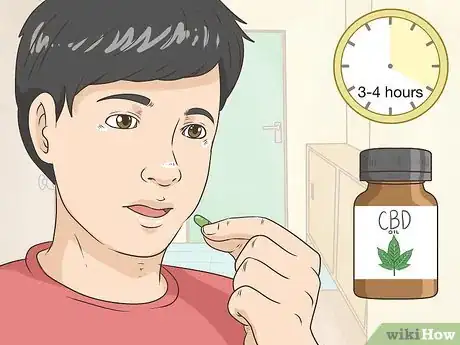

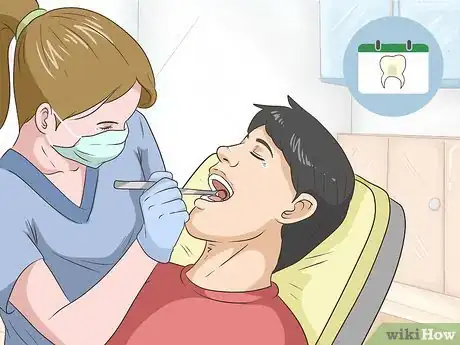
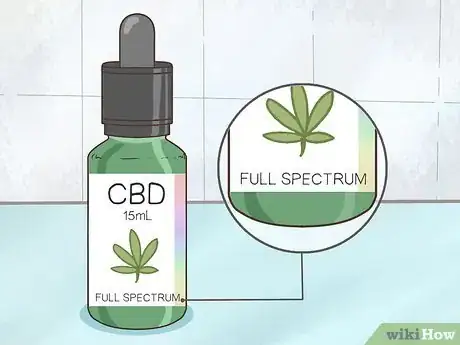
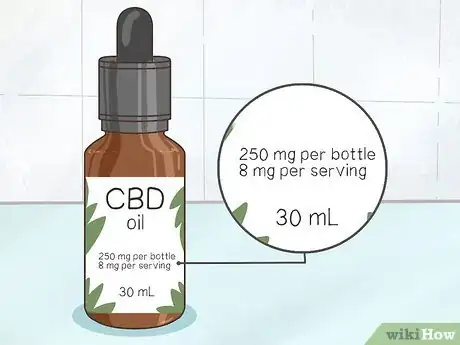

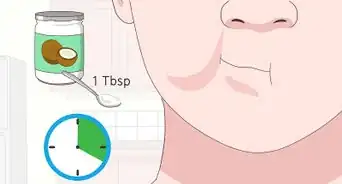

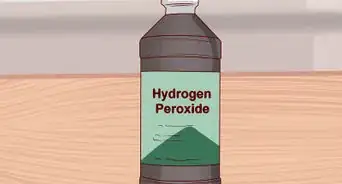
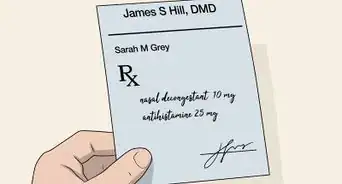

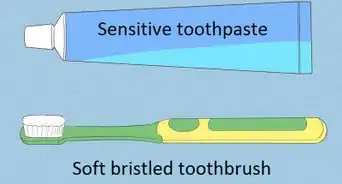
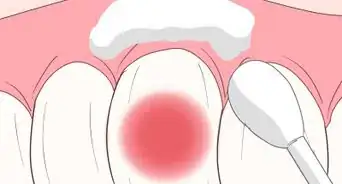





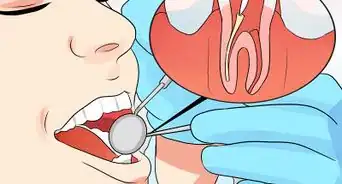








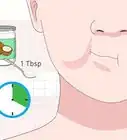
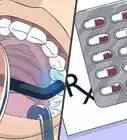

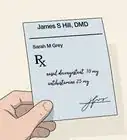



































Medical Disclaimer
The content of this article is not intended to be a substitute for professional medical advice, examination, diagnosis, or treatment. You should always contact your doctor or other qualified healthcare professional before starting, changing, or stopping any kind of health treatment.
Read More...